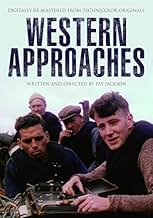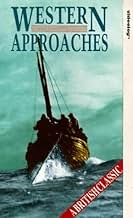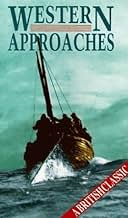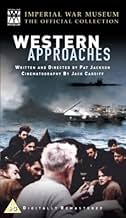A wartime film, made under the auspices of the Crown Film Unit, serving as a tribute to the Merchant Navy. During WWII, they kept the lifeline to America and the Commonwealth open so that th... Read allA wartime film, made under the auspices of the Crown Film Unit, serving as a tribute to the Merchant Navy. During WWII, they kept the lifeline to America and the Commonwealth open so that this little island could fight on. Even as late as 1943/4 when this was made, the convoys st... Read allA wartime film, made under the auspices of the Crown Film Unit, serving as a tribute to the Merchant Navy. During WWII, they kept the lifeline to America and the Commonwealth open so that this little island could fight on. Even as late as 1943/4 when this was made, the convoys still provided vital essential supplies as well as the materiel necessary to take the fight ... Read all
- Awards
- 1 win total
- Convoy Naval Captain
- (as Captain Duncan MacKenzie)
- Convoy Naval Captain
- (as Captain W. Kerr)
- Gunner on Leander
- (as Chief Petty Officer Hills)
- Lifeboat Captain
- (as Captain P.J. Pyecraft)
- Director
- Writer
- All cast & crew
- Production, box office & more at IMDbPro
Featured reviews
Photographed under arduous and hazardous conditions in choppy seas by director Pat Jackson and top Technicolor cinematographer Jack Cardiff in the days when Technicolor cameras were huge and cumbersome, it benefits from a strong narrative drive, while the occasional rough edges and amateurish acting merely underline that it was genuinely shot on a small boat at sea with bona fide merchant seamen.
It's one of those stiff-upper-lip movies, with all the facilities that the British authorities can give it. What makes it stand out from the crowd is Jack Cardiff's Technicolor camerawork: not just the portrait shots that offer noble visages under pressure, but the blues: the azure blue of the sky, the green-blue of the sea, and the steel blue of the ships' interiors.... and occasional snatches of that dark, velvety midnight blue that seems unique to British Technicolor, with the pink-faced, unblinking faces of the men looking at radios and dials and such. Cardiff's abilities with Technicolor have never been matched, and here his camera paints the scenes like Rembrandt, if Rembrandt ever worked in blue; I don't recall he ever did.
Indeed, it can be said that such wartime efforts were "neo-realist" before the term was even coined or the style had actually taken off in Italy! Still, it is debatable whether the end result would have been this noteworthy had professional performers been employed rather than real naval servicemen – since it tells a standard (albeit undeniably gripping) tale of a rescue at sea and the ensuing scuttling of a U-Boat!
Apart from Clifton Parker's evocative score, two novelty aspects are employed here that make the whole show all the more appealing to the casual viewer: the fact that it was shot in Technicolor (by the great Jack Cardiff, no less); the documentary pedigree itself allowed for (or, I should say, excused) the copious use of language that would otherwise not have been permissible for the era – such as "bastards", "bloody", "damn" and "hell"...not to mention sketches of naked women adorning the walls of the radio operators' quarters! For what it is worth, director Jackson would eventually break into commercial film-making but never again approached the reasonable level of excellence achieved in this case!
Did you know
- TriviaLONDON, Dec. 3 (United Press) - The film division of the ministry of information expressed disappointment today that the Crown film unit production "Western Approaches" had been reported banned in the United States by the Will Hays office because of "mild profanity." A statement, pointing out that the film actually was shot at sea with merchant navy men playing all of the parts, said: "It is an integral part of the reality of the film that they should use language that would hardly be in place in the drawing room." ("British War Film Banned for Language", The San Bernardino Daily Sun, San Bernardino, California, Monday 4 December 1944, Volume 51, page 8.)
- ConnectionsFeatured in Cameraman: The Life and Work of Jack Cardiff (2010)
- SoundtracksSeascape
(uncredited)
Composed by Clifton Parker
Details
- Release date
- Countries of origin
- Languages
- Also known as
- Battle for the Atlantic: Greyhound vs Wolfpack - Western Approaches
- Filming locations
- Production company
- See more company credits at IMDbPro
- Runtime
- 1h 23m(83 min)
- Color
- Aspect ratio
- 1.37 : 1


















